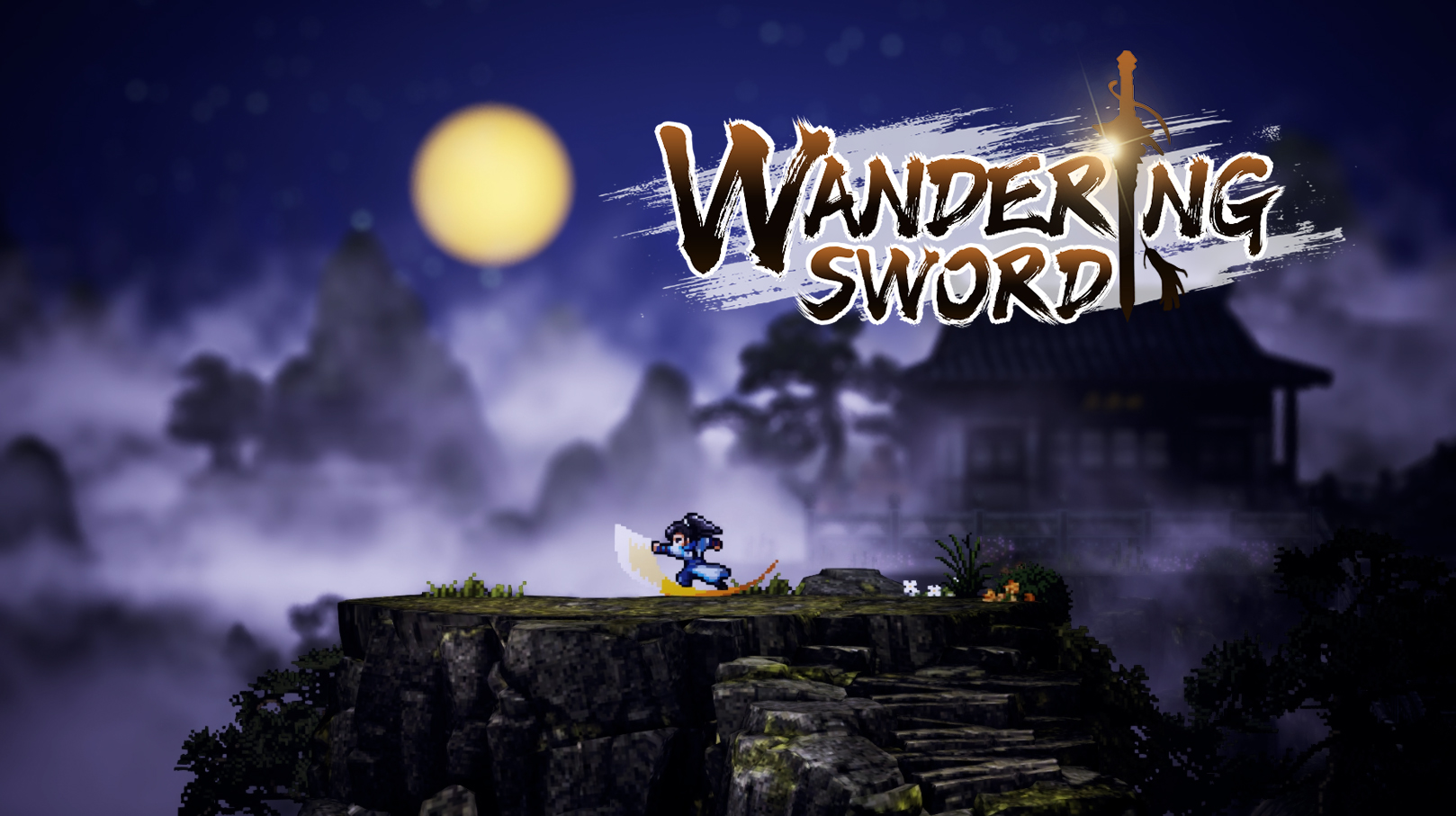HD-2D Meets Ancient China: Let’s explore the world of Wandering Sword
Wandering Sword belongs to a widely untapped video game subgenre called Wuxia, which only has a handful of games available, especially in the West. For the uninitiated, Wuxia, which literally translates to “Martial Heroes,” is a genre of Chinese fiction that revolves around stories of martial artists in ancient China. So the addition of a wuxia-themed HD-2D RPG will be sure to liven up fans of the genre.
What is Wandering Sword?
Wandering Sword is an HD-2D turn-based, tactics-like, Chinese martial arts RPG set in ancient China. Developed by The Swordsman Studio and published by Spiral Up Games, Wandering Sword features visuals reminiscent of Octopath Traveler, a vast library of martial arts and weapons at your disposal, an innovative combat system, a character affinity system allowing you to recruit characters you encounter in your journey, and a myriad of quests and multiple endings to keep you coming back for more.
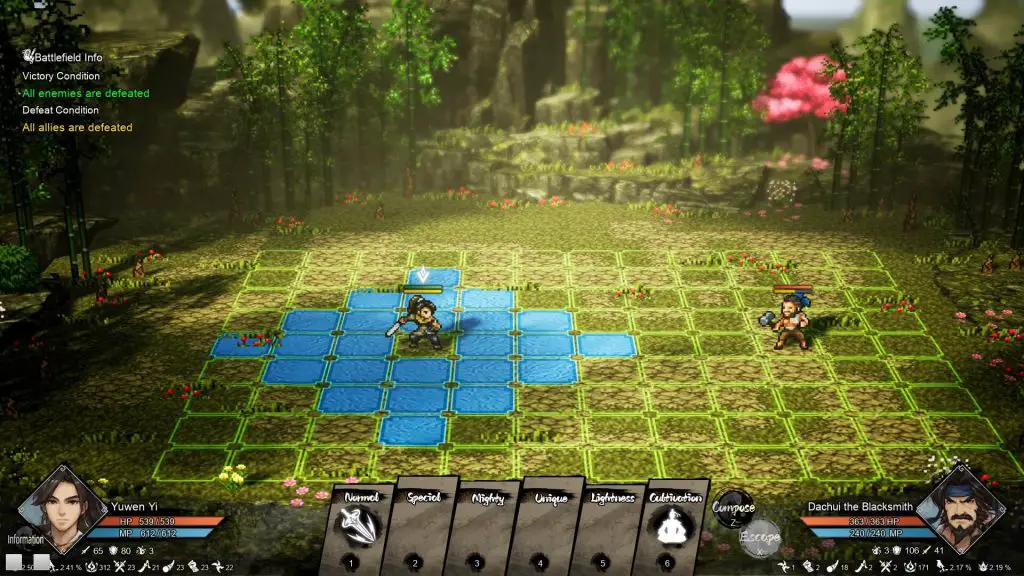
Background Story
Set in a conflict-ridden ancient China, we follow the story of Yuwen Yi, a bright young man who encounters several unfortunate events that change the course of his life forever. After an escort mission goes wrong, Yi finds himself at death’s door. With the benevolence of a certain martial master, Yi is granted an opportunity to grow as a martial artist. Motivated by vengeance and gratitude, Yi sets off on a journey of self-discovery in the martial world, earning a name for himself in his travels.
Going through the main story and the many different sidequests, I encountered wuxia tropes that I’ve seen countless times in wuxia novels and manhuas that I usually would roll my eyes off. However, seeing them presented in the game, I couldn’t help but be thrilled to see those tropes play out and found myself referencing the multitude of Wuxia titles I’ve read.
The main quest has a fairly decent narrative. It’s good but nothing revolutionary. Despite the game’s appearance and the cartoony art style, the story has tragic themes sprinkled throughout. Once I got to explore the world, I actually found myself more immersed in the narratives of the sidequests rather than the main story.
Wandering Sword features side characters and factions that have stories that are arguably more interesting than that of the main story, and it’s not necessarily a bad thing. The fact that these sidequests had me scouring the world, interacting with every NPC just to find another quest, made it feel like the world is actually alive rather than just a tapestry for aesthetics.
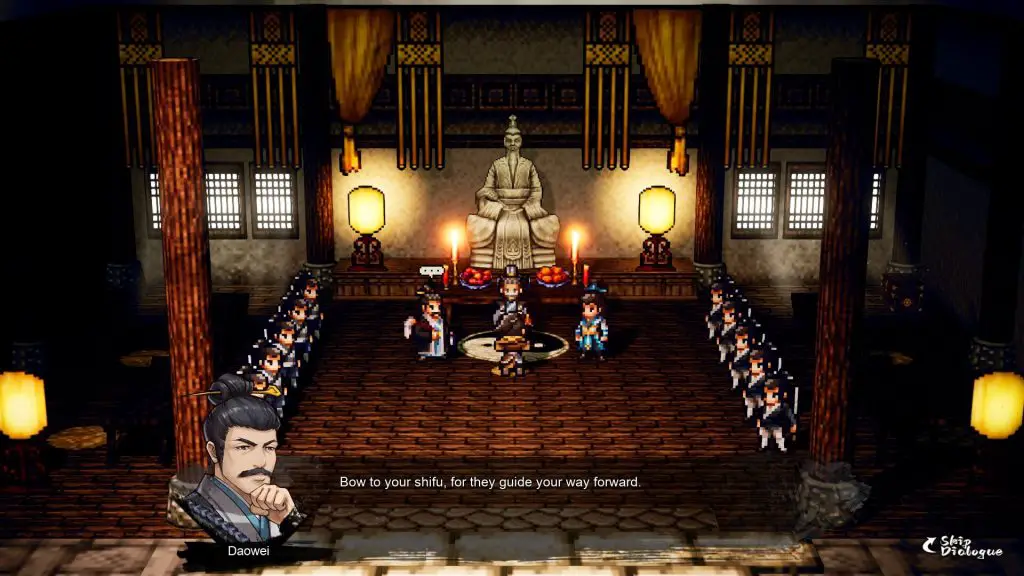
The Jianghu In Wandering Sword
If you look at screenshots of the game, I think it is obvious that Octopath Traveler heavily influences Wandering Sword. The HD-2D style graphics have been on the rise lately for RPG games, with a lot of up-and-coming RPGs jumping on the trend. However, HD-2D doesn’t automatically translate to “good visuals”, but fortunately, the team at The Swordsman Studio was able to make use of this visual aesthetic masterfully.
Mixed with the HD-2D aesthetics, it is an amazing visual representation of ancient China. As I went and explored the world of Wandering Sword, I found myself overlooking the similarities to its HD-2D precursors as I had been enamored by…..everything! It is evident that the team behind Wandering Sword paid great attention to detail in conveying ancient China in the wuxia world. Every area I explored felt drenched with ancient Chinese themes, with not a single thing looking out of place.
Aside from the environment, important characters are also uniquely designed. As a result, meeting new characters and exploring side quests never became stale. Animation also plays a big part in the character design. The way the different characters move gives them their own distinct personalities. You’ll be seeing some awesome animations during the narrative but the combat also features visual effects from different moves and techniques that are pretty fun to watch play out.
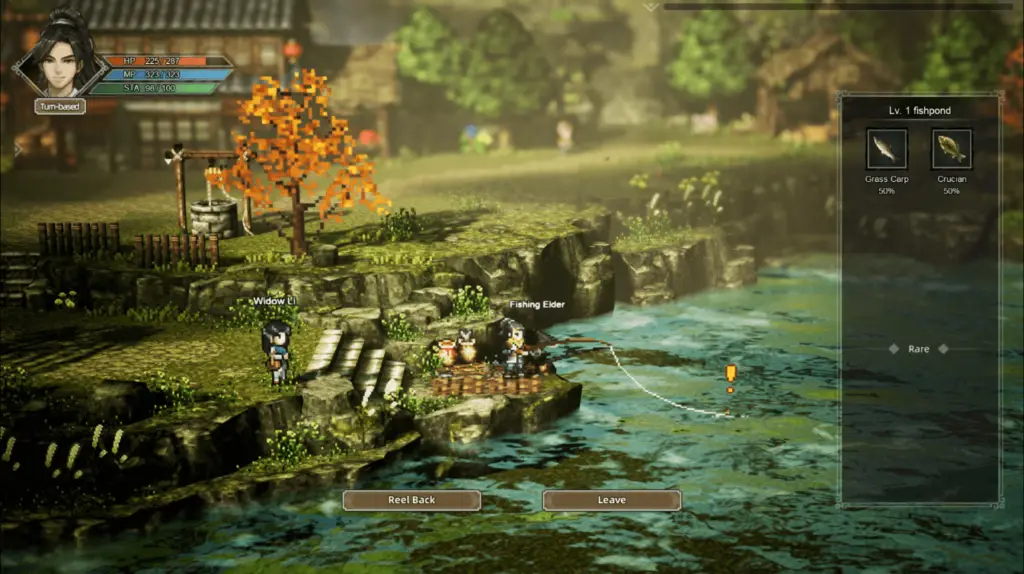
Gameplay & Combat system
Wandering Sword takes a different route in terms of combat that simplifies the tactics RPG formula. Instead of combat taking place on a huge map, they’re played out on a smaller grid, resulting in quicker battles. Having some sort of tactics element, you’ll still have to worry about character positioning. Your character’s movement and abilities will have different ranges, so moving a character toward an enemy to enter the attack range is a must.
Weapon Types
Speaking of range, I wanna talk about weapons. Wandering Sword features five weapon types, each with its range mechanics. Even though abilities themselves dictate the actual range of an attack, every ability save for “Lightness” and “Cultivation” abilities falls under one of these weapon archetypes and somewhat adheres to their concepts.
- Swords mainly attack in straight lines, with the ability to hit multiple enemies over long ranges in a single line.
- Sabers specialize in cone-shaped attacks, performing the best when facing enemies in front.
- Polearms work best when surrounded by enemies. Polearm attacks are short-ranged but hit around the user.
- Fist Arts are mostly single-target abilities that specialize in 1-on-1, head-to-head fights.
- And Hidden Weapons specialize in attacking from safe distances.
Having these archetypes is pretty nice and acted as a guide for me to decide what type of playstyle I want to do. Abilities can be learned through either finding and reading martial arts books scattered around the world or raising your affinity with other characters.
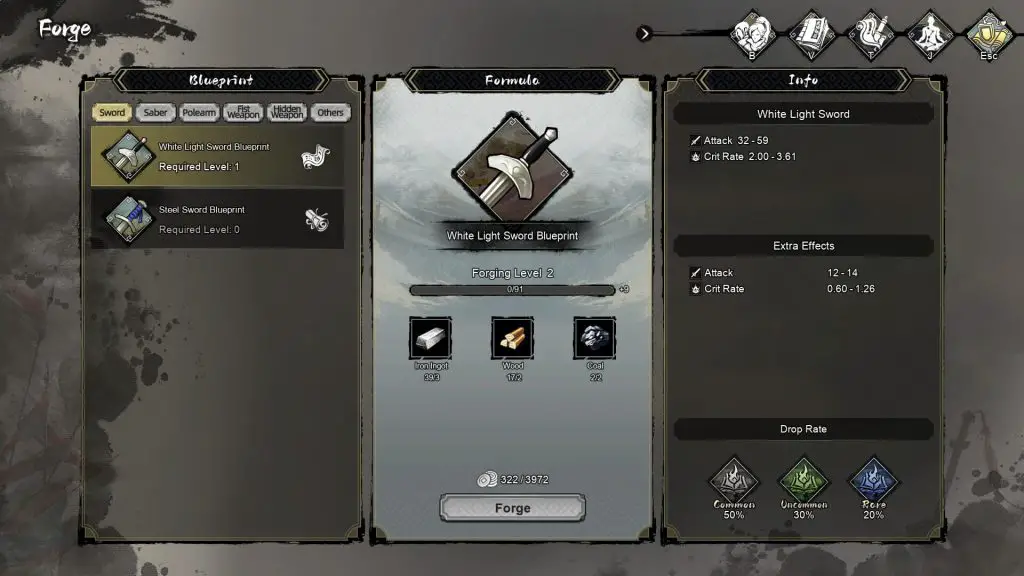
The Affinity System
The affinity system lets you unlock more interactions with certain NPCs. You can increase a character’s affinity by giving them gifts, but some characters have prerequisite conditions before you can try gifting them.
Depending on your affinity, you will be able to do the following. “Spar”–winning has a chance to earn one of the items in a character’s inventory–, “Consult” lets you learn new abilities from the character but each ability has its own specific requirements with one of them being affinity level, and “Invite” lets you recruit them to your team. Not all NPCs allow these interactions. Only a few characters will be available for sparring, consulting, and inviting, which I don’t really have a problem with.
Battle as you like
Wandering Sword also features two combat modes, “Turn-Based” and “Real-Time.” The real-time mode still plays out on a grid, and you’ll have to command your main character quickly because everyone moves after their turn gauge fills up. And you won’t have to worry about your other party members; AI will take them over and will automatically attack enemies for you.
At first, I didn’t really get the idea of having two different combat modes that play very differently. In fact, initially, I hated its real-time combat. But after playing longer, I realized that fighting weaker enemies can get very monotonous very fast, so having the option to switch to real-time combat makes fighting weaker enemies a breeze. So now, I’m a fan of it. I would describe it as semi-auto-battling.
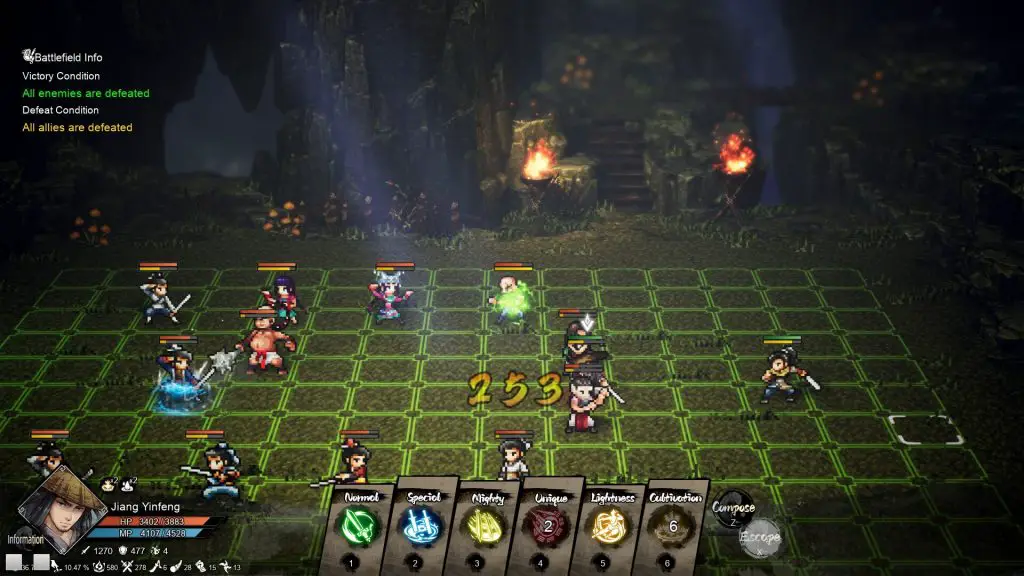
Crafting
When you’re not fighting enemies, you’ll explore the Jianghu, going through towns, villages, large cities, martial arts schools, caves, and many other vistas. In your journey, you’ll encounter a significant number of NPCs, ignore them, or interact with them, it’s all up to you. Aside from exploring, other activities revolve around crafting. Yes, there is crafting as an RPG in this day and age. In Wandering Sword, it’s neither a good thing nor a bad thing. It’s there, it’s okay, you can do it, or you can completely ignore it.
You get decent gear on quests, and enemy drops anyway. What comes with crafting is harvesting. As you explore the world, you’ll notice sparkly interactable objects. These are materials you can harvest for crafting. In some cases, you’ll have to beat enemies to get specific materials. And there’s also fishing if you fancy that. There are a few crafting methods, each has its own NPC that you need to talk to in order to craft.
As this is a wuxia game, you can empower your characters through fighting and cultivation. Fighting earns you points that let you upgrade your abilities, and upgrading your capabilities gives you meridian points, which you can use to further improve your characters.
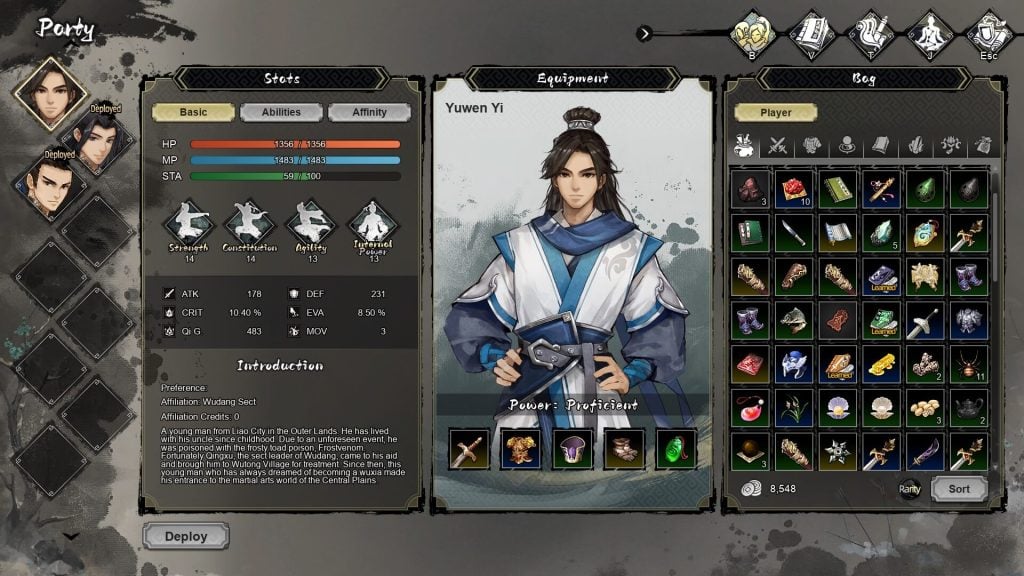
Too Much Wandering
This game is excellent, and I would recommend this to anyone in a heartbeat. But there are a couple of minor problems and one glaring issue that I hope the devs will fix in the future.
The first minor inconvenience I encountered was the audio feedback when attacking. In JRPGs and in Octopath Traveler specifically, performing an ability or attacking has a satisfying effect, especially due to the on-hit sound effects. In Wandering Sword, save for a few super moves, most attacks end up feeling lackluster, and the cause of this is simply the audio feedback.
Another problem is directed towards players unfamiliar with Chinese wuxia games. This is a problem that is evident in a lot of games in the genre. It’s the information overload of systems and mechanics. Thankfully, Wandering Sword attempts to remedy this problem by slowly introducing players to its systems one by one. However, the same can’t be said with its inventory system.
There are a lot of items in this game, and going through them, trying to understand what each of them does, and sorting through all the clutter that seems to not be for anything (until later parts of the game when you finally understand what they’re used for), was very overwhelming, even for myself who is quite familiar with the genre.
And finally, the issue that I really can’t put up with is related to the main story and sidequests. This problem is flow. In most RPGs, after getting a quest and going to the quest location, you’ll notice very early on if your character can do the quest or if you’re still under-leveled and should check back on it once you grow a bit stronger.
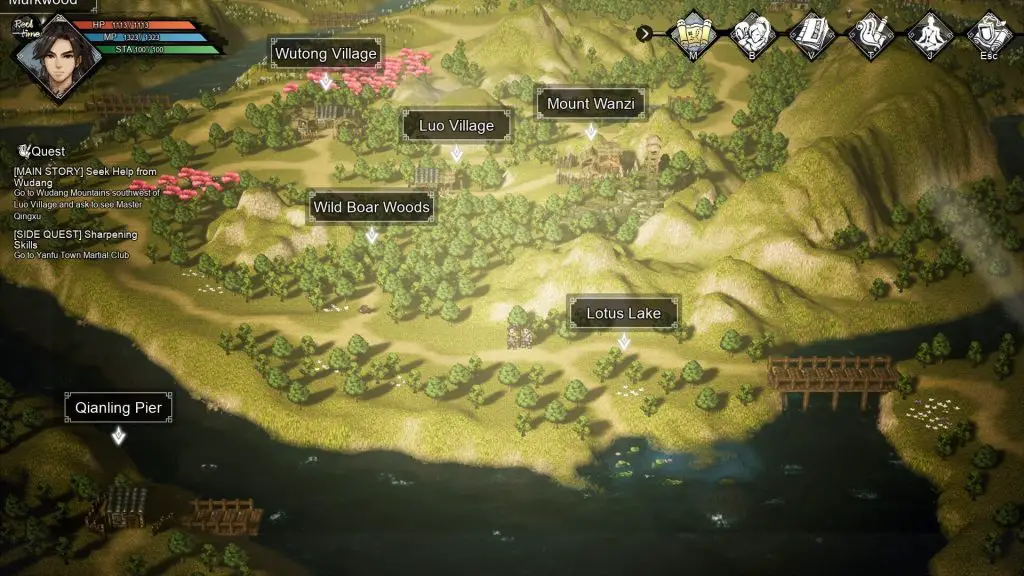
Some games even go further and give every quest a level recommendation. The problem with questing in Wandering Sword, is that there is no natural flow in things. In RPGs, the main story should be doable from start to finish without grinding, except when it prompts you to do some side quests to encourage leveling.
Even when that’s not the case, this is also the problem with side quests. Sure, an RPG with a main story that sometimes you have to grind to progress isn’t unheard of, but sidequests that can’t be done without interruption are an anomaly.
Don’t get me wrong, the stories and the writing are great, but they are overshadowed by this annoying system where after doing the first quest objective, you realize you can’t progress because the enemy is too strong for your current level. So you grind up, beat the enemy, and then the next objective is another enemy that can’t be beaten with your grinded-up level, AGAIN.
This results in a fragmented story experience which really breaks the immersion, especially in situations when the story is reaching the climax, then you realize you can’t progress so you end up doing other quests instead. This resulted in me having to go across entire regions to finish individual objectives from different questlines, going back and forth, absorbing each side quest like breadcrumbs instead of a whole loaf throughout my entire playthrough.
Final Thoughts
Wandering Sword is a great wuxia title that encompasses a myriad of different Chinese martial arts and Wuxia tropes, served in an amazing HD-2D presentation that gives justice to the theme and aesthetics of ancient China, resulting in an immersive world for you to explore.
Coupled with an innovative combat system, open-world exploration, life-skilling activities, and great stories that immersive breaking mechanics unfortunately plague. The game is now out on Steam, so check it out if you’re interested.


